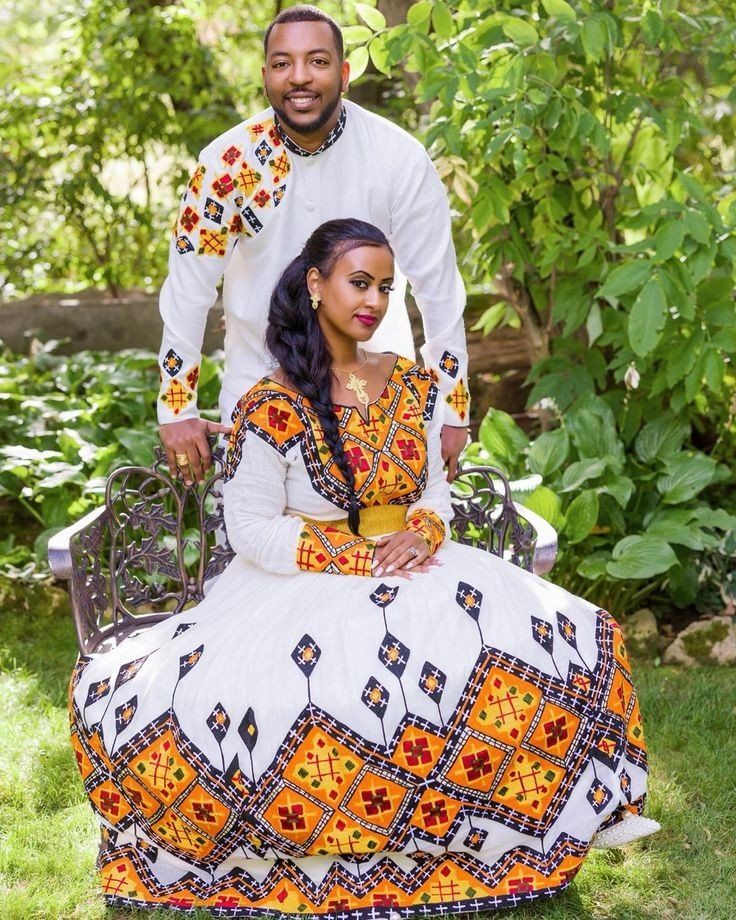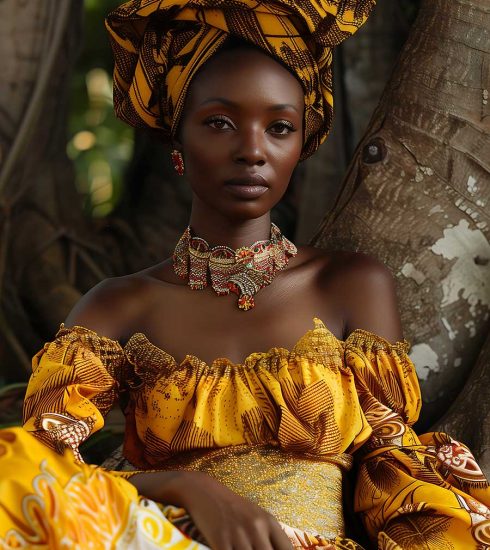Wedding Wonders: African Cultural Attire That Stuns on the Big Day
- Fesheni Africa
- August 1, 2025
Whether it’s the bold colors, intricate beadwork, or jaw-dropping headpieces, African cultural wedding attire has an irresistible charm that not only celebrates love but also pays homage to heritage.
Weddings are magical no matter where they happen, but African weddings? Oh, those are pure drama, vibrance, and royalty rolled into one. If you think a simple white dress or black tux is the peak of wedding fashion, African brides and grooms would kindly like to introduce you to what we call extra, but make it heritage.
Take the Nigerian Aso Oke, for instance. This handwoven fabric has become a staple for Yoruba traditional weddings, often worn by the bride and groom in matching outfits that scream “power couple.” Think shimmering headwraps (gele), embroidered agbadas, and gowns in vibrant colors like coral, gold, and turquoise. And let’s not forget the beads – lots of beads. It’s like being draped in a wearable treasure chest. If you caught a glimpse of Nigerian superstar Davido’s traditional wedding to Chioma, you’d know what we mean. His Agbada was so regal, it might as well have come with a crown. And Chioma? A bridal goddess in Aso Oke, radiating cultural pride and contemporary elegance. Talk about setting the wedding style bar sky-high!
South Africa brings us the bold beauty of the Zulu and Xhosa wedding attire. Zulu brides often wear traditional Isidwaba (a leather skirt) paired with beaded necklaces, headbands, and arm bangles. The intricate beadwork tells stories and reflects the bride’s family and community. Grooms, on the other hand, can often be found rocking animal hides and shields, because what says “I’m ready to protect this union” more than a shield? Modern twists on this attire have seen brides swapping leather skirts for beautifully patterned fabrics that combine tradition with contemporary fashion.
And speaking of stunning prints, let’s talk about the Swahili coast’s Kanga and Kitenge fabrics, which are worn in coastal weddings across East Africa. Brides drape themselves in these colorful textiles adorned with meaningful Swahili proverbs, offering subtle advice for married life (because, let’s be honest, every bride could use a bit of wisdom for the journey ahead). Today, you’ll find modern bridal gowns borrowing Kitenge prints, often reimagined in Western-style silhouettes, creating a perfect blend of heritage and haute couture.
Then, there’s the grand royalty of Ghana’s Kente cloth. The intricate handwoven fabric in bright, geometric patterns has long been associated with royalty and sacred ceremonies. It’s no surprise that Ghanaian couples often choose Kente for their traditional weddings, wrapping themselves in its majestic designs. Modern brides and grooms have been adding their flair, transforming Kente into fitted gowns, jackets, and even tuxedos. Some couples even color-coordinate their fabrics with the wedding décor because, in an African wedding, you don’t just match your partner – you match the room.
Now, let’s travel to Ethiopia, where the bridal outfit is the stuff of legends. Ethiopian weddings feature brides in Habesha Kemis, a traditional dress made of white cotton with intricate handwoven borders in gold or vibrant colors. This elegant simplicity is paired with accessories such as gold necklaces and headpieces. While the Habesha Kemis remains a classic, modern brides often tweak it with lace, tulle, or beads, giving it a chic twist while staying rooted in tradition.
And let’s not forget the intricate henna ceremonies that take center stage in North African weddings. In countries like Morocco and Sudan, brides are adorned with stunning henna designs on their hands and feet, often accompanied by dazzling kaftans with gold embroidery. These luxurious kaftans have crossed borders, finding their way into global wedding collections – a little slice of African glam for anyone looking to stand out.
What’s remarkable is how African wedding attire evolves while preserving its roots. Designers are constantly reimagining these traditional outfits, merging old-world charm with modern aesthetics. From Aso Oke turned into ballgowns to Kitenge blazers worn with sneakers, African wedding fashion proves that culture isn’t static – it’s a living, breathing, fabulous thing.
So, if you’re planning a wedding or just dreaming about one (or simply want an excuse to wear something stunning), take a page out of Africa’s wedding style book. Because when it comes to tying the knot, why not go big, bold, and breathtaking? After all, love deserves a little drama – and a lot of culture.









